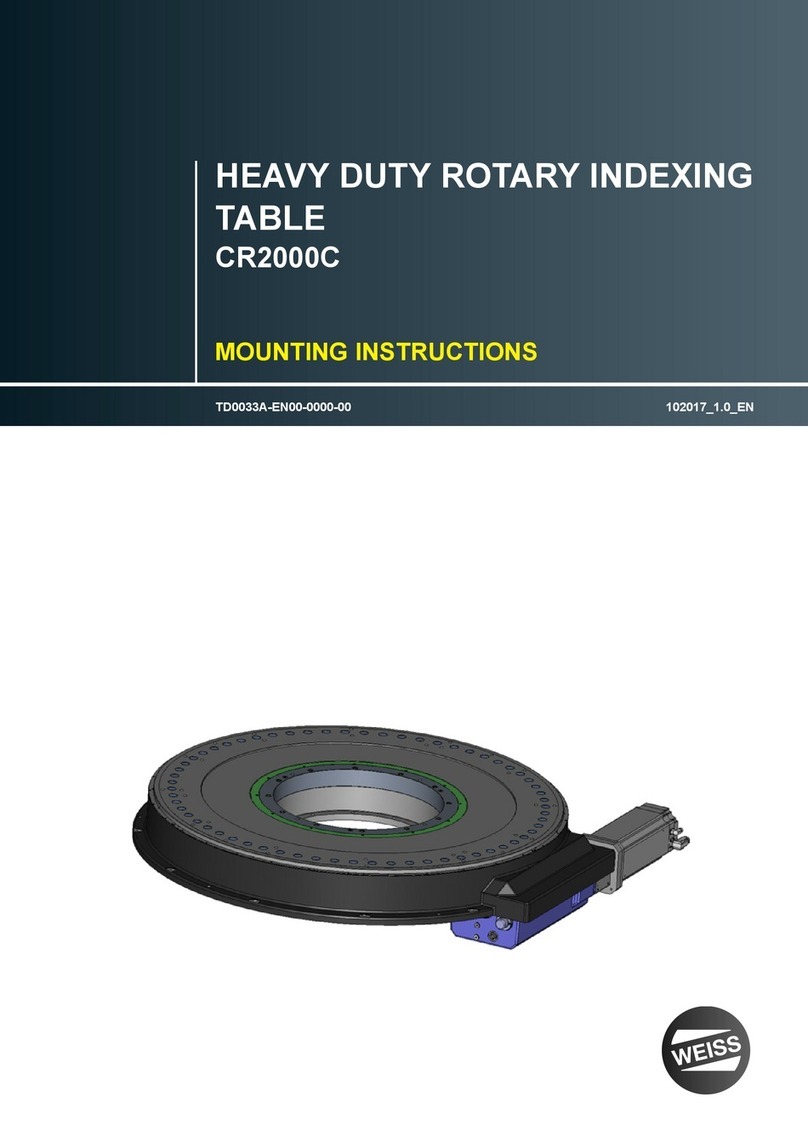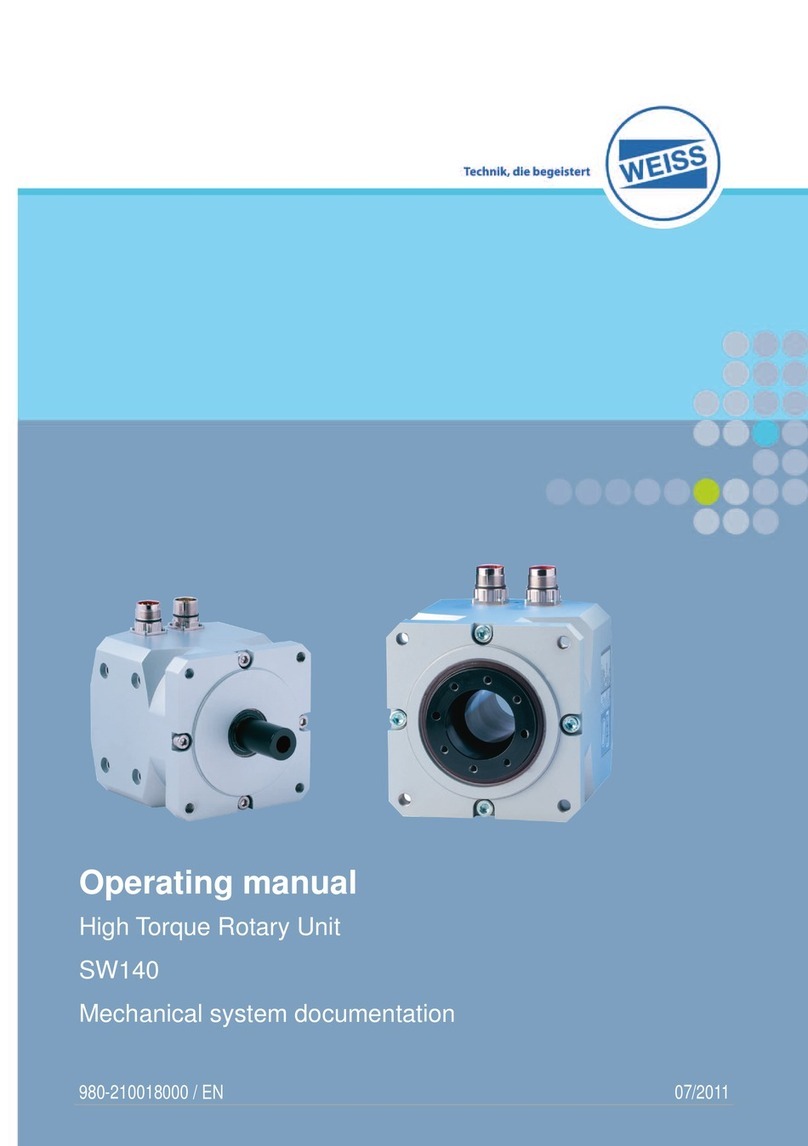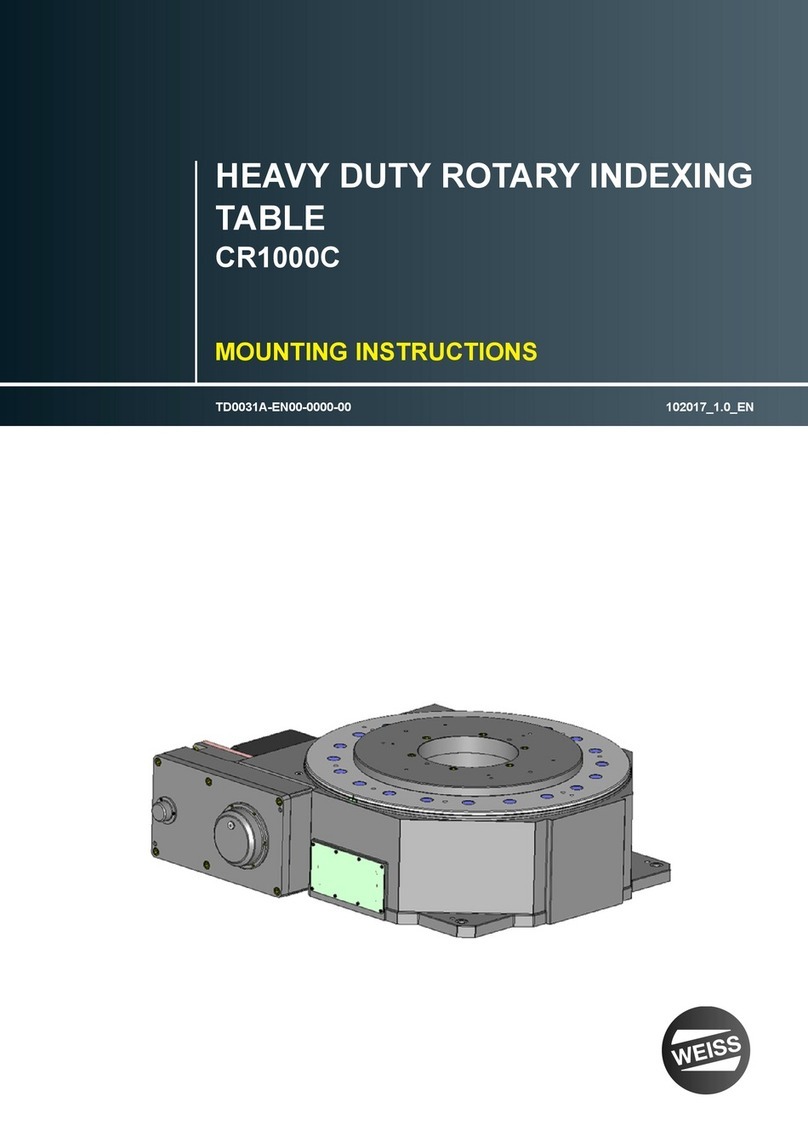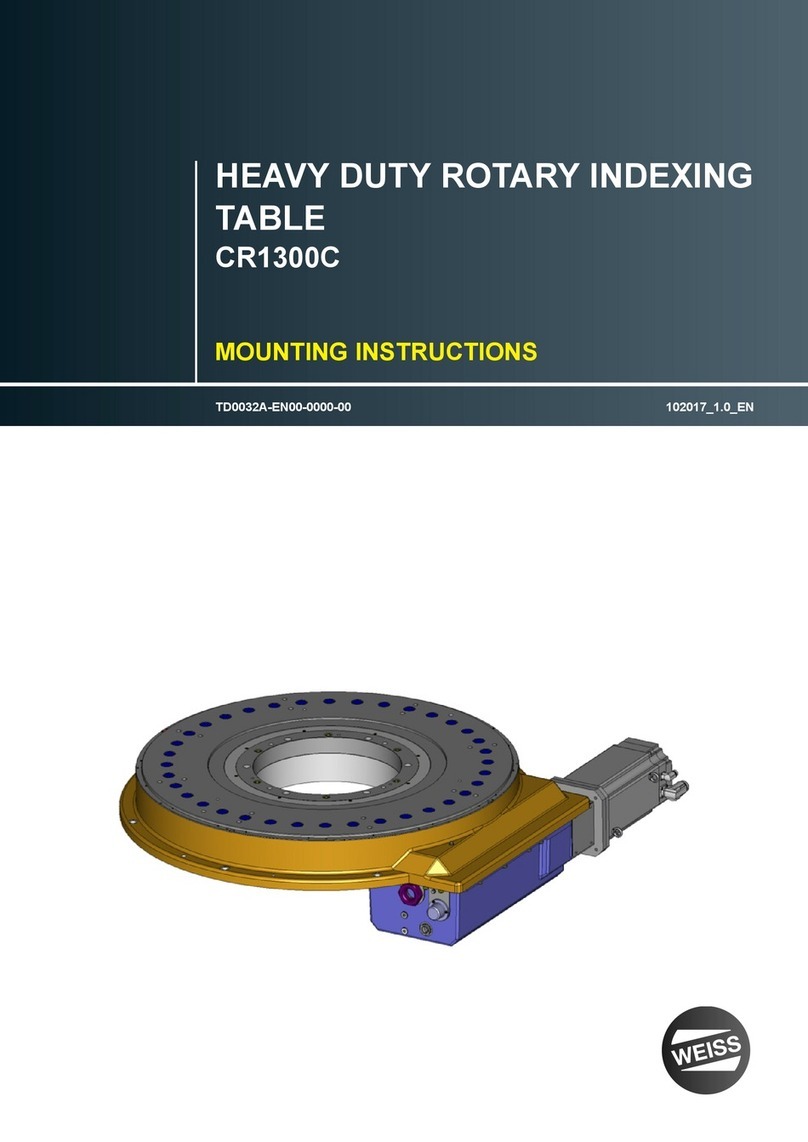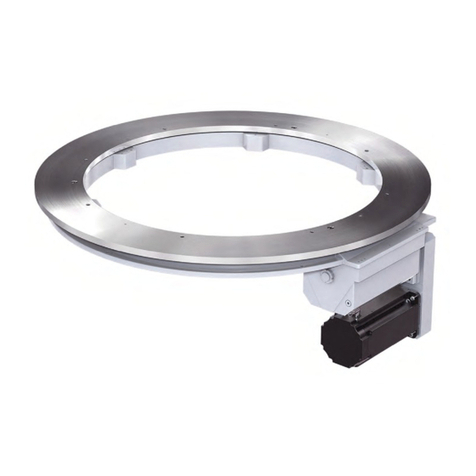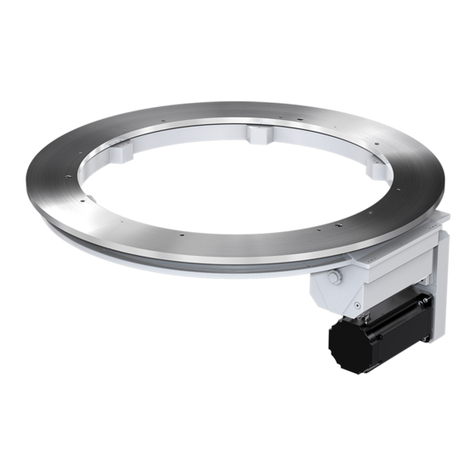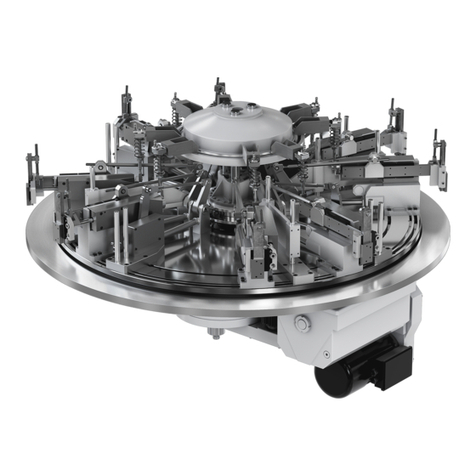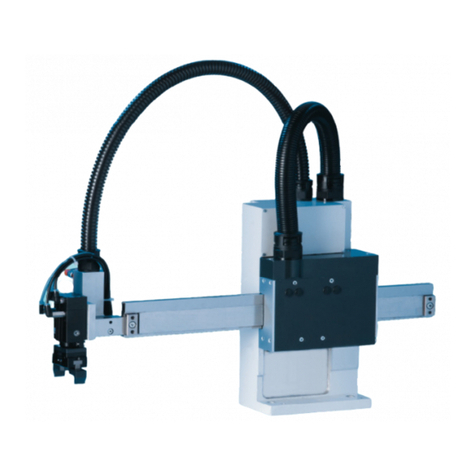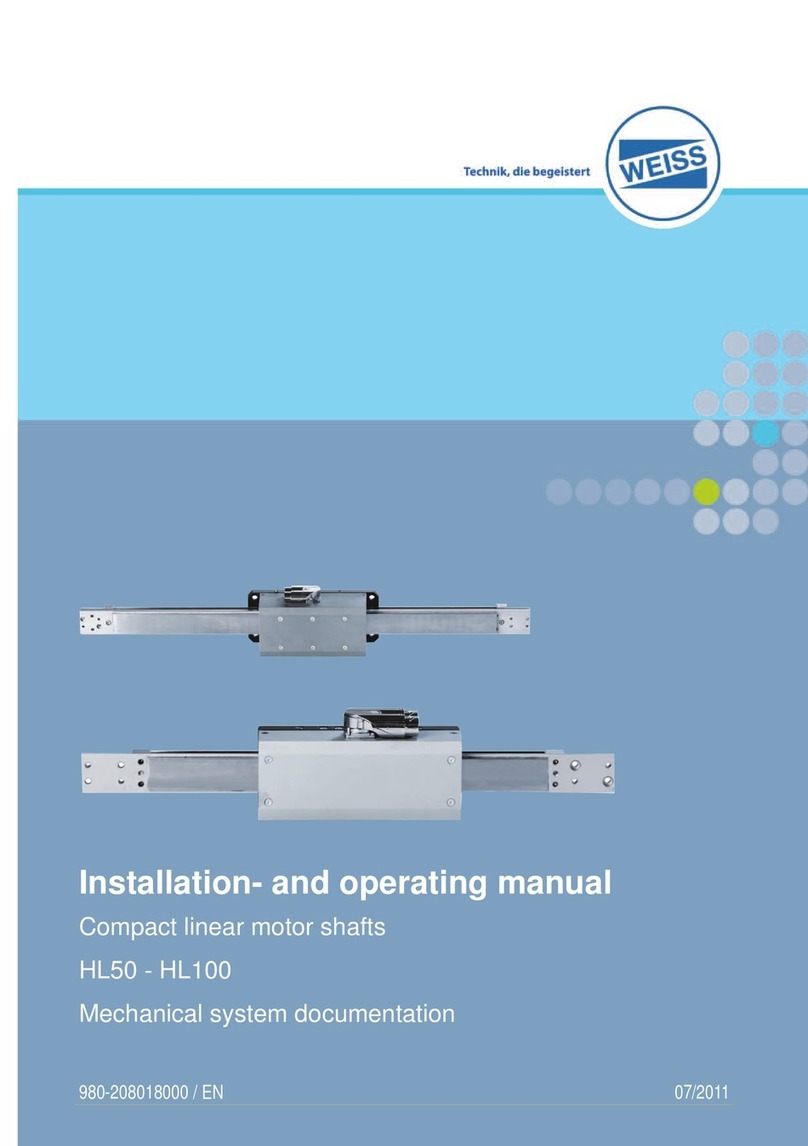
WEISS GmbH 03/2002 9
WARNUNG
Die Rundschalttische dürfen nicht in einer
explosionsgefährdeten Umgebung eingesetzt
werden.
Jeder sicherheitsbedenkliche Einsatz eines
Rundschalttisches ist zu unterlassen!
Die Rundschalttische dürfen weder während
der Lagerung noch während des Betriebes
Flüssigkeiten ausgesetzt sein.
HINWEISE
Die Elektromotoren sind grundsätzlich vor
Überlastung zu schützen. Wir empfehlen den
Einsatz eines Motorschutzschalters mit
elektromagnetischem Schnellauslöser. Als
zusätzliche Absicherung haben unsere
Steuerungen TS 002 E und EF-xxx eine
Zykluszeitüberwachung. Sollten Sie diese
Steueren nicht verwenden, so installieren Sie
bitte in Ihrer Steuerung eine Zykluszeitüber-
wachung, die nach Auslösen eines Start-
signales den Motor abschaltet, wenn nach ca.
doppelter Drehbewegungszeit keine Fertig-
meldung durch den induktiven Näherungs-
schalter "P" erfolgt.
Bei Nichteinhaltung dieser Empfehlungen
können wir keine Garantie für
Motorschäden übernehmen.
Vor der Inbetriebnahme des Rundschalt-
tisches Verschlussstopfen der Entlüftungs-
schraube entfernen (siehe Kapitel 4.3).
WARNUNG
Transportieren Sie den Rundschalttisch nur
mit einem Hebezeug, welches für das
entsprechende Gewicht ausgelegt ist (siehe
Gewichtstabelle im Kapitel 4.1). Verwenden
Sie für das Befestigen des Rundschalttisches
am Hebezeug Ringschrauben, die der
Belastung sicher standhalten.
Für TC 120 bis TC 320 genügen zwei Ring-
schrauben, ab TC 500 sind drei
Ringschrauben einzusetzen.
Befestigen Sie die Ringschrauben in den Ge-
winden des Drehtellers (siehe auch Kapitel
4.1).
WARNING
The indexers cannot be used in an explosion
hazard environment.
The indexer shall not be used in applications
where safety is compromised.
The indexers shall not be exposed to any
liquids during storage or in use.
NOTES
The drive motors have to be protected against
overload. We recommend the use of a
protective motor switch with a magnetic quick-
action circuit breaker. Our control cards
TS 002E and EF-xxx have a cycle time control
as an added safety feature. In case you don’t
use these control cards you should program a
cycle time control in your PLC. The motor
should be disconnected if the limit switch “P”
is not made after a period of double the index
time since the start signal.
We will decline the warranty for the motor
if this recommendation has not been
followed.
Before start-up remove the plug from the
breather valve.
WARNING
For transportation use only hoists which are
designed for the weight of the indexer. (See
weight table in chapter 4.1). Use eyebolts,
which are strong enough.
Use 2 eyebolts for indexer models TC 120 to
TC 320, use 3 eye bolts for models TC 500
and above.
The dial plates have the correct tapped holes
for the eyebolts (refer to chapter 4.1).

